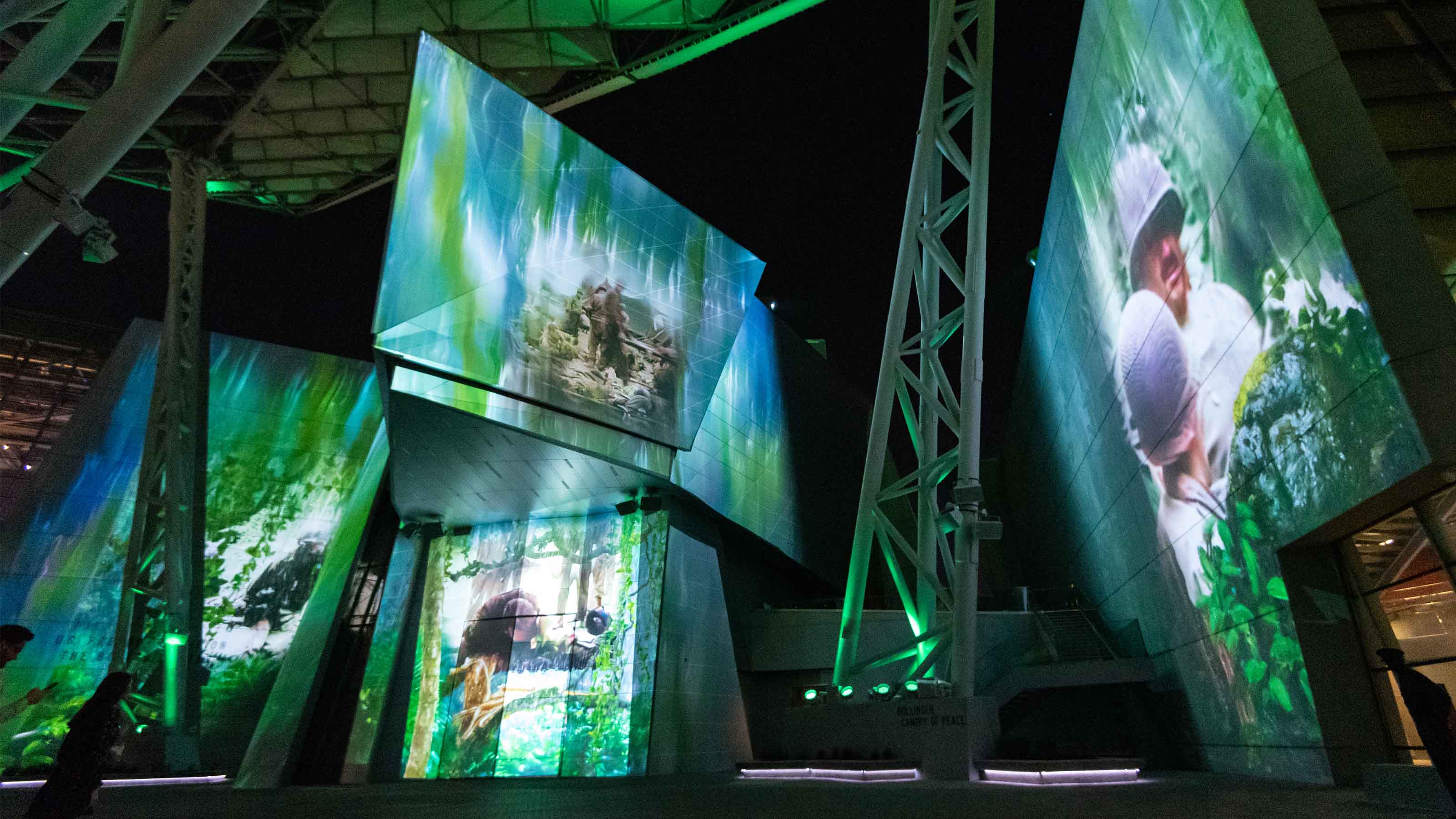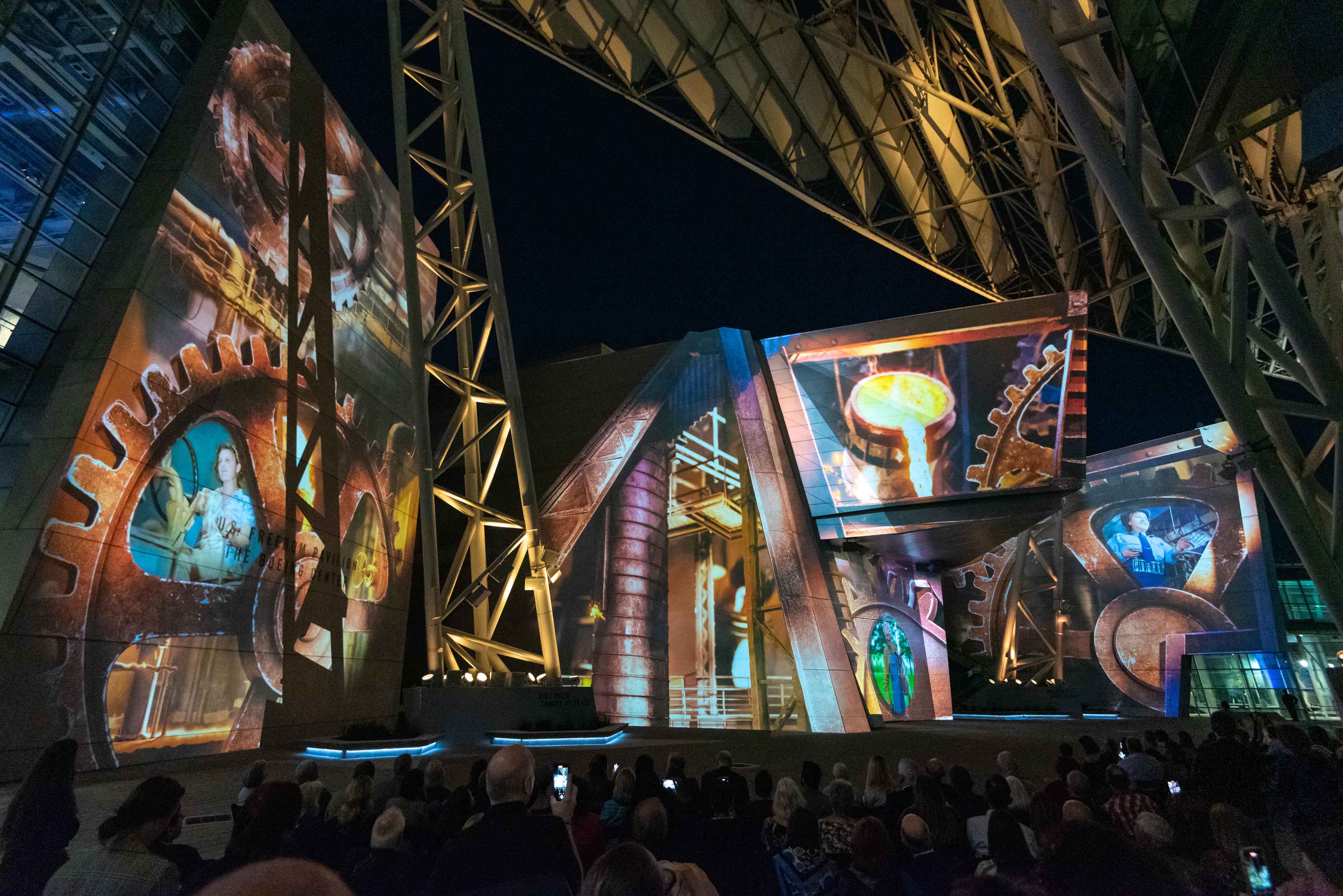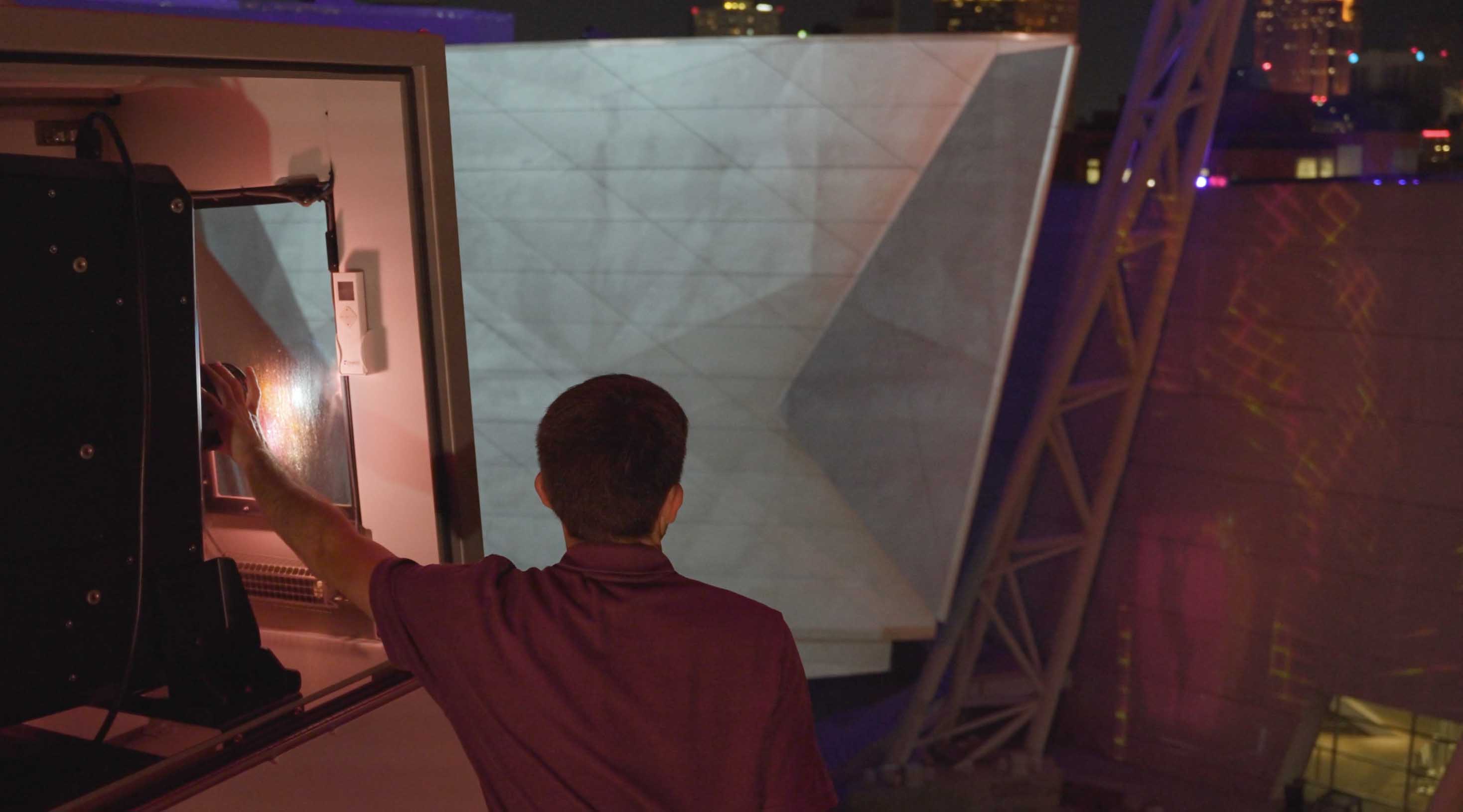
Expressions of America is a 30-minute, immersive outdoor experience at the National WWII Museum in New Orleans. Through vivid projection mapping and powerful audio, the show shares art, music, and reflections from veterans and everyday people that served in World War II. Visuals projected as large as 90 feet tall transform the exterior of the museum's buildings into the stories of the men and women from that historic era.
[Amelia Earhart Hangar Museum Takes Flight]
While Medici Media (formerly known as Mousetrappe) took care of the concept design and production, it was Solomon Group who executed the install using Panasonic projectors, Tempest enclosures, and a slew of Pro AV solutions to bring these stories to life. It went so well that Solomon Group recently completed another project on the newly opened Liberation Pavilion. Yes, we said on.
Challenging Times
Expressions of America was a long time coming. The entire project was almost five years in the making, but the installation itself took roughly eight months from March-November 2022. While he wasn't there from the beginning five years ago, Barry Mendelson, audiovisual programmer for Solomon Group, led the charge.
Mendelson and his team faced several challenges in the installation process. "That was in the height of supply chain issues," Mendelson recalled. "Speakers were a challenge to get in on time—we actually ended up having to swap the speaker models that we were using because we couldn't get the ones that we wanted. The projection housings were another big one. We used Tempest for the projection housings, and the model that we had spec'd they could no longer get the air conditioning parts for."
[Supply Chain Lessons Learned]
While some of the manufacturers were able to come up with solutions, there were other forces at play. "The other big delay was the canopy that is over the entire campus," Mendelson said. "That was the root of the delay. They had some issues with manufacturing it and getting it here and getting it installed. That was several years delayed. Once the canopy was up, we did the first phase by lighting the canopy. Even though the Liberation building wasn't there, we did all the lighting a year before Expressions opened."
That's right, the team started preparing the projection mapping extravaganza minus the center building on which the stories would be projected. Once that canopy was finished, more production challenges emerged.

"The Liberation Pavilion has the most projection on it, and then the two buildings that flank it to the left and right also have projection on them. But the canopy legs are directly in front of the two side buildings, and they're within 20 feet of the building, so there's no getting projection around them," Mendelson explained. "We had to shoot projection through them, but they didn't want to see projection on the canopy leg itself."
Mendelson also described challenges in finding the fiber pass, because all the buildings were built in phases. "They knew they had multimode because that's what they use for their network, but they didn't even realize that there was single mode sitting right next to it," he said. "We walked to campus once or twice with their IT department to try to trace out all of our fiber passes—and there's some interesting patches back and forth through buildings to get where we needed to go."
Handling Big Easy Humidity
In order to bring the content to life, Solomon Group used eight Panasonic 50,000-lumen projectors, including six PT-RQ50Ks, one PT-RQ32K, and one PT-RQ22K. Keeping those projectors safe in the outdoor venue was top priority, especially in a region of the United States known for muggy days and hurricane seasons. Remember those supply chain issues Mendelson discussed with the projection housing? Working with Tempest, Solomon Group was able to get a prototype—the Tempest Oasis active-cooled enclosure—to ensure everything was on time for the November 2022 opening.

"There was a bit of a growing pain because [Tempest] are based in California," Mendelson recalled. "They don't have the humidity that we have here and the temperature swings that we have here, so once we got them installed, it would fail. We would have 70-80% humidity, so the air-conditioned units pushing that cold air into those housings would cause condensation on the glass and then wash out the projection.
"But Tempest was really good about coming up with a fix," he continued. "They were very responsive in getting a fix—they ended up putting a second layer of glass in a heater in the middle that kicks on with the projector so that it keeps that glass hot, so that condensation, if it does form, will burn off quickly."
“We’re delighted to have been able to work with the Solomon team to produce this amazing experience, even in such a challenging humid environment,” said Felipe Hermosillo, Tempest’s vice president of sales. “It’s a stunning project and an exciting debut for the Oasis enclosure family. The latest RGB laser projectors are amazing, but they are sensitive to heat and temperature fluctuations, and this is where Oasis really wins, even in a challenging environment like the Big Easy.”
Liberating Visuals
The lighting on the canopy and around the show is brought to life with more than 100 Chauvet Ilumipods. The audio—so important not just for the accompanying music but for clarity in the stories that are told—covers the entire audience with 18 One Systems full-range outdoor speakers and six subwoofers. “The audio does play a big role in the show because there's actual archived clips of veterans accounting their experiences in the war,” Mendelson explained. "And the soundtrack was completely done from scratch and recorded locally in New Orleans with local artists.”
“The people who did the technology behind the event got to watch as 22 World War II veterans got to watch their stories projected 90 feet in the air. I thought that was fun.”
Adan Murad
A fiber infrastructure is used for video transmission, which was why uncovering those fiber paths was so important in those original walkthroughs. To deliver the content, there are three synched LightAct video servers that output video to Aurora Multimedia fiber extenders. Single-mode fiber connects to all the receivers, where the content is transferred back to HDMI for the projectors. The result is a high-lumen, vivid show that takes the guests back to the 1940s.
November 2023 saw the opening of the final building of the National WII Museum's plan. Inside the Liberation Pavilion are two floors of exhibits and a third floor with a 4D theater with a rotating seat base. Solomon Group has been working on the installations on the first and second floor. "It's a lot of projection," Mendelson said. "It's a mix of Panasonic and Epson projectors and a lot of interactive ELO touchscreens."
[Classroom Projectors: What You Need to Know for the First Day of School]
The experience has been a success for guests, but it was also rewarding for the people who brought it all together to sit back and watch it unfold. "Not even on the technical side," said Adan Murad, director, sales operations for Solomon Group, "but it was cool that at one of the grand openings of Expressions, there were about 22 World War II veterans in the audience. Not only did Solomon Group produce the event via our live events department, but the people who did the technology behind the event got to watch as 22 World War II veterans got to watch their stories projected 90 feet in the air. I thought that was fun."







